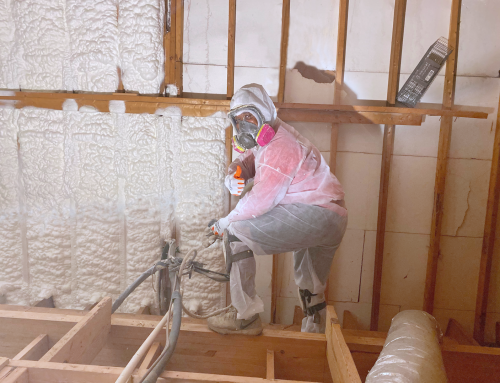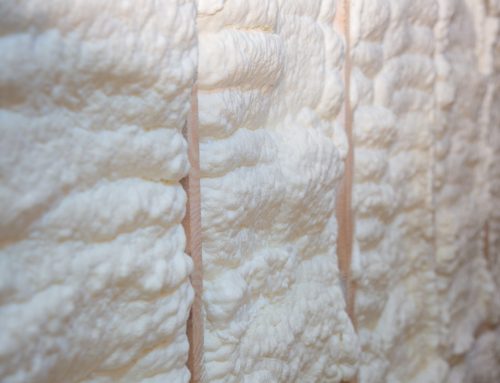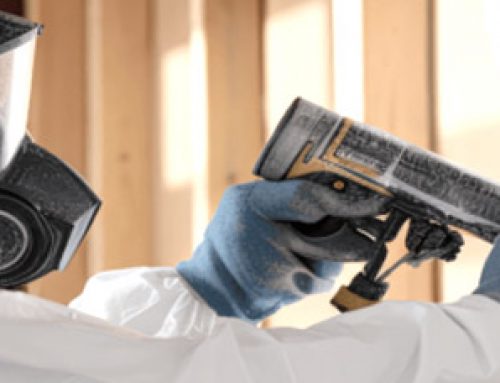The Power of Spray Foam: R Value
Did you know that the R value of spray foam insulation far outmatches other materials like fiberglass, cellulose, and mineral wool? Sometimes, only two inches of closed cell spray foam is all you need.
Granted, the thickness of closed-cell spray foam needed to achieve adequate insulation in a wall depends on several factors, including the desired level of insulation, local climate conditions, and building codes or standards. Even so, 2 inches is often what’s recommended for sufficient closed-cell spray foam insulation. Of course, the more insulation you install, the more you benefit from the R-value of spray foam, especially in terms of insulation, comfort, and energy savings.
2 Inches Leaves a Lot of Extra Space

You’ll be happy to know that the R value of closed cell spray foam gives you considerable opportunities to add extra space to your house. For comparison’s sake, fiberglass insulation requires from 3.5 to 6.25 inches of insulation. Considering that the average American house is 2,500 square feet with 10 different rooms, we’re talking about 0.225 to 1.8 square feet of added space in every room if each room were to switch from fiberglass to two inches of closed-cell spray foam insulation.
Here are some exiting ways you could enjoy all that extra room:
- Increase Your Living or Work Space: Larger rooms and higher ceilings, which you could potentially use, say, for a workshop;
- Extra Storage Spots: built-in storage areas such as closets, cabinets, or shelving units. These storage solutions help organize belongings and minimize clutter, enhancing functionality and aesthetics;
- Install Built-In Furniture: window seats, benches, built-in desks, maybe even a home theater? These custom-built features add functionality and character to rooms;
- Implement Specialized Rooms or Features: The additional space provided by the R value of spray foam insulation can be utilized to create utility rooms, smart home technology, LED lighting, microwaves, refrigerators, or features tailored to specific needs or interests. These will fit seamlessly into cabinetry or countertops;
What is the R-Value of Spray Foam Insulation and Why Does it Matter?
R-value serves as a crucial metric in determining the thermal performance of insulation materials. Materials with higher R-values come with greater energy savings and comfort. So, whether you prioritize the extra thermal regulation or the space, the R value spray foam wields gives it a serious punch.
Closed-Cell Spray Foam R-Value Chart
To illustrate the impressive insulation capabilities of closed-cell spray foam, let’s take a look at a simplified R-value chart:
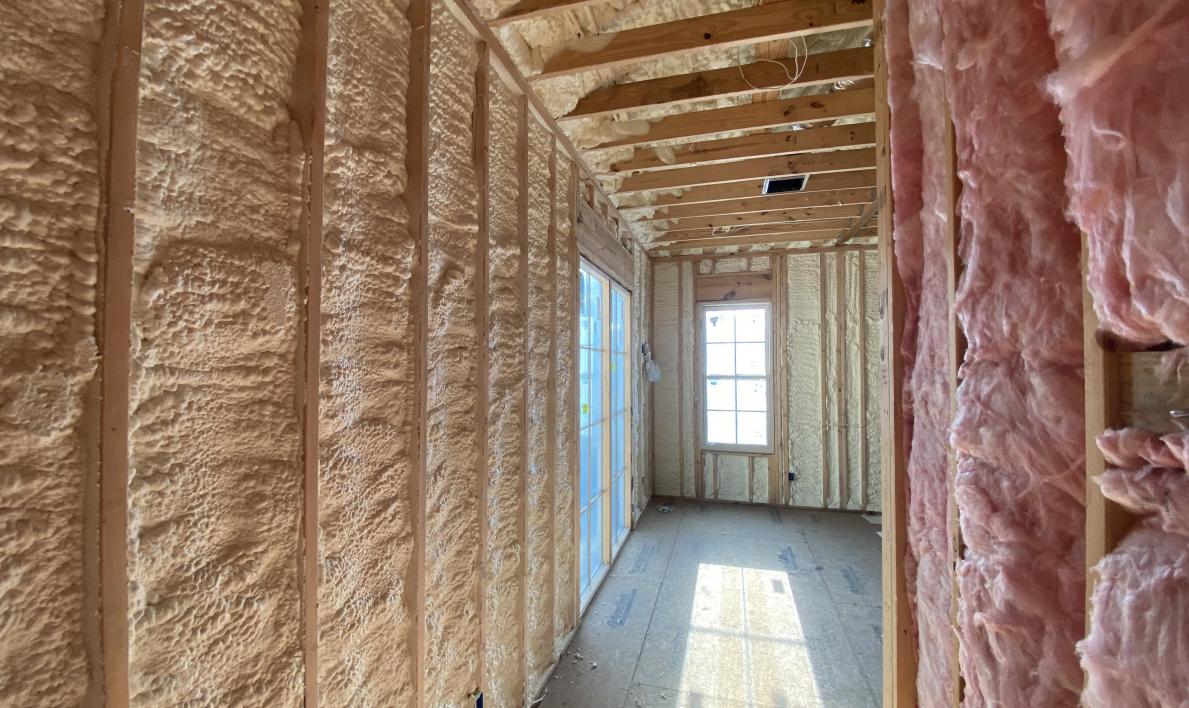
- Closed-Cell Spray Foam Insulation: R-Value per Inch of 6.0 to 7.0
- Fiberglass Batt Insulation: R-Value per Inch of 3.0 to 4.0
- Cellulose Insulation: R-Value per Inch of 3.5 to 3.8
By comparing these values, you can see what is the r value of closed-cell spray foam and how canned spray foam producers, such as Ecothermix, are able to boast such a higher insulation level while requiring less to be used.
Open Cell Spray Foam
Spray foam comes as both open cell and closed cell. Both of these types of spray foam expand after being released and are able to fill in tight spaces, gaps, voids, and cracks. They’re also both adaptable, versatile, and great for a variety of different surfaces, whether it’s wood, metal framing, concrete, or masonry. Though open-cell spray foam has a weaker spray foam R value per inch of 3.5-4.5, it can serve as a nice companion to its more potent closed-cell counterpart, proving handier in certain situations:
- Super-expansive: Open-cell spray foam expands significantly upon application, typically expanding to around 100 times its original volume. This expansion helps fill voids and irregularities in the building cavity, providing effective insulation and air sealing;
- Suitable for moisture permeability: Open-cell spray foam allows moisture to pass through the foam. This property can be beneficial in certain applications, such as in humid climates or for buildings requiring breathable assemblies
Closed-Cell Spray Foam as a Moisture Barrier
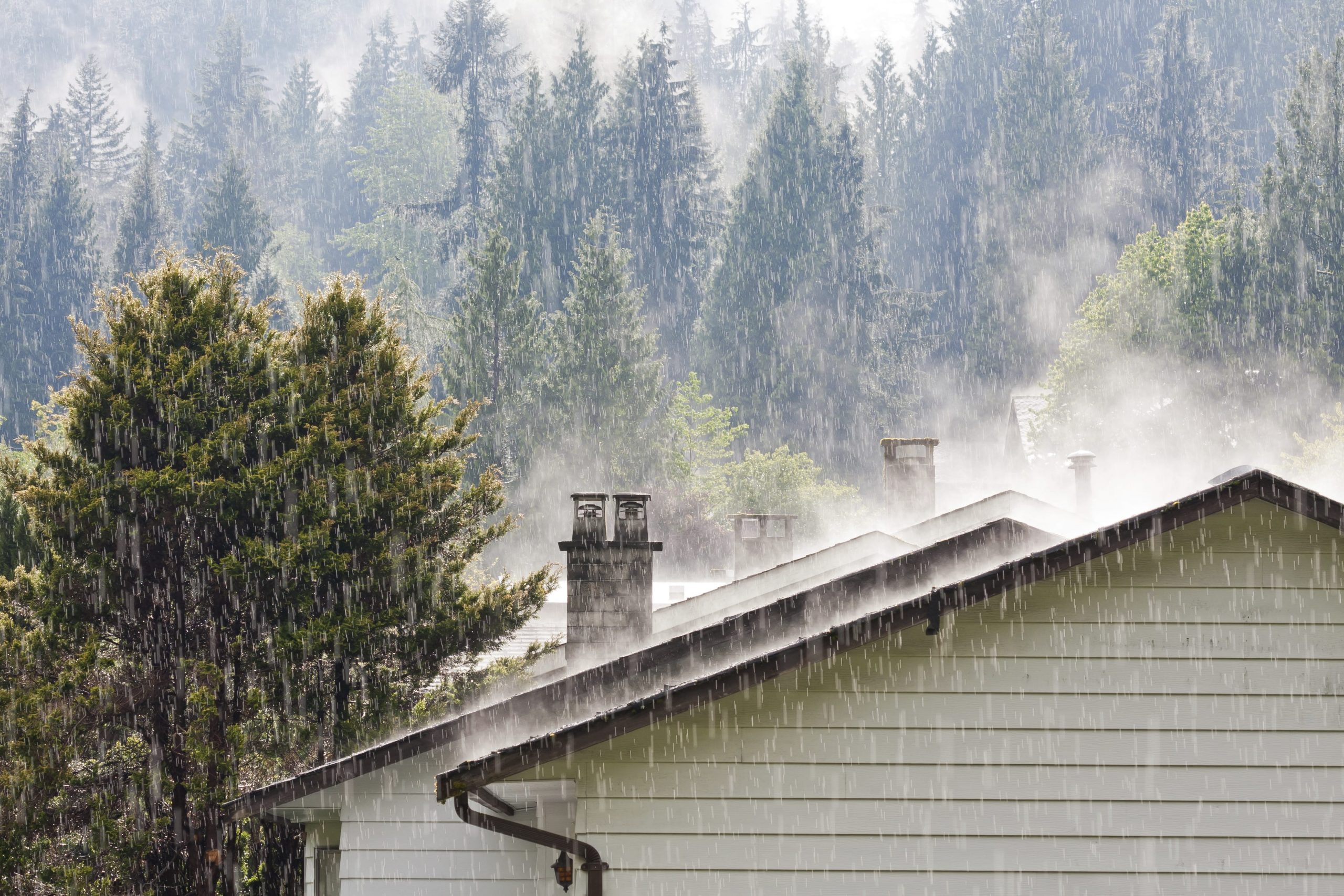
Closed-cell spray foam’s ability to act as a vapor barrier helps prevent moisture infiltration and air leakage, rendering it especially handy for high-moisture environments such as basements, crawl spaces, and below-grade applications. Its excellent resistance to moisture-related issues such as rot, mold, ice damming, and mildew is due to its closed-cell structure, typically boasting a water absorption rate of less than 3% by volume and less than 1.0 perm.
Closed Cell Spray Foam R Value & Longevity
Closed cell spray foam insulation R-value provides serious stability and durability to a building’s structure, improving resistance to impacts, wind loads, and other external forces. With proper installation and maintenance, fiberglass and cellulose insulation can last 20 to 30 years or more; however, these are more susceptible to pest damage, settling, and compression over time, which affect their insulation effectiveness and longevity. The R value of spray foam of the closed cell variety, by contrast, enables it to last as long as 50 years, nearly twice as long as cellulose and fiberglass.
Ecothermix
Ecothermix offers some of the most cutting-edge insulation with top-notch spray foam insulation R value designed to transform your home or business into an energy-efficient, comfortable space. Our innovative insulation is engineered to deliver unparalleled performance, superior thermal resistance, moisture control, air sealing properties, long-term energy savings, and peace of mind, knowing that your property is protected against moisture damage, mold, and pests.
Click here to try Ecothermix today
.[/fusion_text]


